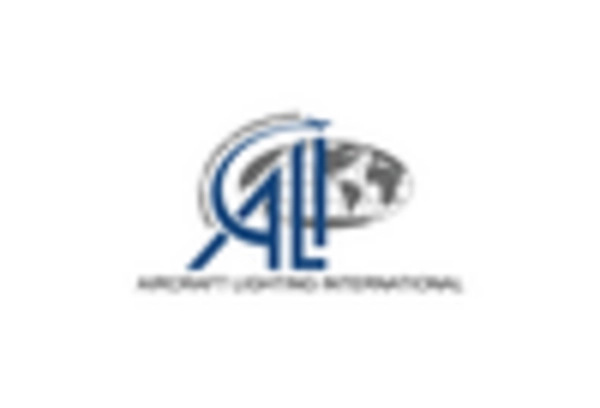Growing Air Traffic Demand
The US commercial airport lighting market is experiencing a notable surge in demand due to increasing air traffic. According to the Federal Aviation Administration (FAA), passenger enplanements are projected to reach over 1 billion by 2026. This growth necessitates the expansion and modernization of airport infrastructure, including lighting systems. Enhanced lighting solutions are essential for accommodating larger aircraft and ensuring safety during night operations. As airports strive to improve operational efficiency and passenger experience, investments in advanced lighting technologies become imperative. This trend indicates a robust market opportunity for manufacturers and service providers within the US commercial airport lighting market, as they seek to meet the evolving needs of airports across the nation.
Focus on Safety and Operational Efficiency
The US commercial airport lighting market is increasingly focused on enhancing safety and operational efficiency. Airports are prioritizing investments in lighting systems that improve visibility and reduce the risk of accidents during takeoff, landing, and taxiing. The FAA emphasizes the importance of proper lighting in its safety guidelines, which has led to a heightened awareness among airport operators. As a result, there is a growing demand for advanced lighting solutions that meet safety standards while optimizing operational performance. This trend indicates a robust market potential for companies within the US commercial airport lighting market, as they develop and provide innovative lighting technologies that address these critical safety concerns.
Technological Advancements in Lighting Solutions
The US commercial airport lighting market is witnessing rapid technological advancements that enhance the efficiency and effectiveness of lighting systems. Innovations such as LED technology and smart lighting solutions are gaining traction, driven by their energy efficiency and longevity. The FAA has recognized the importance of these technologies, promoting their adoption through various initiatives. For instance, LED lighting can reduce energy consumption by up to 50%, which is particularly beneficial for airports aiming to lower operational costs. Furthermore, smart lighting systems can adapt to real-time conditions, improving safety and visibility. This technological evolution presents a significant opportunity for stakeholders in the US commercial airport lighting market to offer cutting-edge solutions that align with modern airport requirements.
Government Funding and Infrastructure Investments
The US commercial airport lighting market stands to benefit from increased government funding and infrastructure investments. The Biden administration has proposed significant investments in transportation infrastructure, including airports, as part of its broader economic recovery plan. This funding is likely to facilitate upgrades to airport facilities, including lighting systems. The FAA's Airport Improvement Program (AIP) allocates federal funds to support airport development projects, which often include lighting enhancements. As airports seek to modernize their infrastructure, the demand for advanced lighting solutions is expected to grow. This influx of government support presents a promising opportunity for stakeholders in the US commercial airport lighting market to capitalize on upcoming projects and initiatives.
Sustainability Initiatives and Environmental Regulations
The US commercial airport lighting market is increasingly influenced by sustainability initiatives and environmental regulations. Airports are under pressure to reduce their carbon footprint and comply with stringent environmental standards. The FAA has implemented guidelines encouraging airports to adopt sustainable practices, including the use of energy-efficient lighting systems. As a result, many airports are transitioning to LED lighting, which not only reduces energy consumption but also minimizes light pollution. This shift aligns with broader national goals of promoting sustainability in aviation. Consequently, the demand for environmentally friendly lighting solutions is expected to rise, creating a favorable landscape for companies operating within the US commercial airport lighting market.

















Leave a Comment